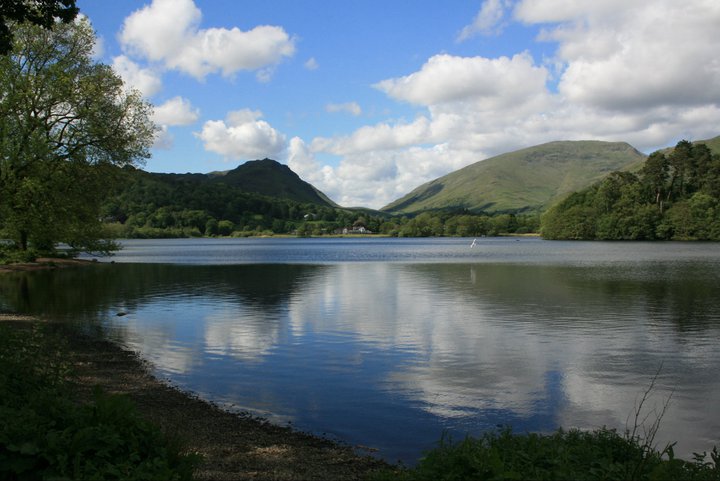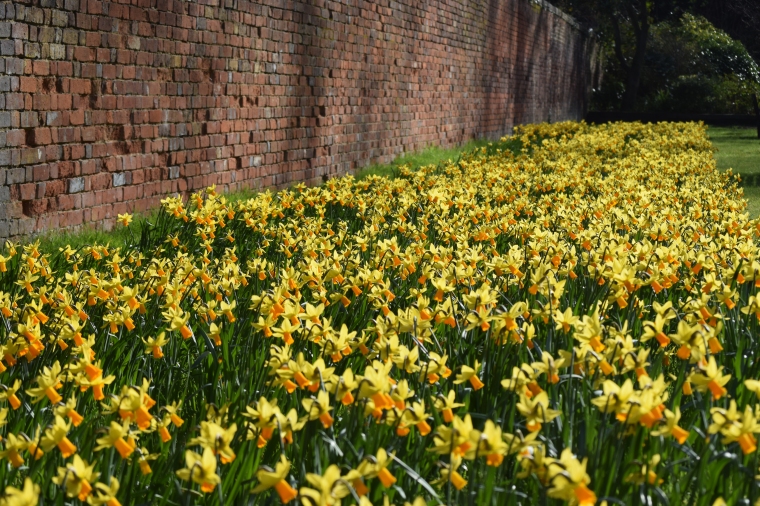Spring has to be one of my favourite seasons of the year. I always feel a little like Mole, from the Wind in The Willows as he comes out of the ground and into the spring sunshine for the first time. That wonderful fresh new smell of flowers bursting open, grass growing, the damp soil springing to life and the soft fragrance of early spring flowers that float on the breeze.
For me the first sign of spring is seeing the great swathes of golden headed stems adorn roadsides and riverbanks. Driving round the windy roads of the Lake District in April, Daffodils popped up everywhere; in fields, beside lakes and in craggy rocks. It is easy to see why William Wordsworth was so inspired by the landscape and county he grew up in to become one of the English languages most famous poets. In fact, it is not difficult to see why the Lake District has inspired and nurtured so many artists and writers who have used the beauty and drama of the landscape to develop their art. Wordsworth’s poetry is wholly encompassed by the landscapes that surrounded him and Dorothy’s journals give us a great insight into the flora and fauna of the area.

William Wordsworth grew up in Cockermouth, the second of five children born to John Wordsworth and Ann Cookson. His father was the legal representative for John Lowther, the 1st Earl of Lonsdale. Due to the importance of his job, the family were granted a beautiful Georgia home in Cockermouth. Wordsworth initially had an idyllic childhood, with days spent playing in the gardens of the family home with his brothers and sisters. Situated on the banks of the River Derwent, William developed his love of nature here as a young boy. But the untimely death of first his mother, and then his father led to a dramatic change in the family’s circumstances and years of unhappiness. A far cry from the happy days in Cockermouth as the much loved home was taken away, the family was split up and they left the house for good in 1784. William and Dorothy, who had always been close as siblings were not reunited until 1795 having been sent to live with varying relations.
Wordsworth finally found solace and happiness once again with his sister Dorothy, when they purchased Dove Cottage in Grasmere in 1799, just weeks after William had walked past it with his brother. From his cottage window he would have had an unadulterated view of the Lake at Grasmere and its beauty in all seasons with the mountains and hills beyond. Both William and his sister, the diarist Dorothy, loved the outdoors and once again as adults they enjoyed each other’s company exploring the wilds of the mountain peaks and the pleasures of the lakeside walks. She was for life, his mentor and confidante, and it was her journals and observations of the rugged terrain of Cumbria that often became a source of inspiration of Williams writing and a great passion for him.
Perhaps one of Wordsworth’s most famous poems, I wandered Lonely as a cloud was inspired by the daffodils of springtime in the Lakes.
‘I wandered lonely as a cloud
That floats on high o’er vales and hills,
When all at once I saw a crowd,
A host, of golden daffoldils;
Beside the lake, beneath the trees,
Fluttering and dancing in the breeze.’
William was inspired to write his famous ‘daffodils’ poem after a walk along Ullswater with Dorothy in 1804. He actually wrote the poem, about two years after their walk and his inspiration came from Dorothy’s account in her journal from April 15th 1802. She wrote that the daffodils ‘tossed and reeled and danced, and seemed as if they verily laughed with the wind, that blew upon them over the Lake.’ Dorothy’s journals clearly depict the wonder of seasons amongst the Lakes and were often a source for inspiration for William. His poem was first published in 1807 and his final edited version was published in 1815.
“ When we were in the woods beyond Gowbarrow Park we saw a few daffodils close to the waterside. We fancied that the lake had floated the seeds ashore, and that the little colony had so sprung up. But as we went along there were more and yet more; and at last under the boughs of the trees, we saw that there was a long belt of them along the shore, about the breadth of a country turnpike road. I never saw daffodils so beautiful. They grew among the mossy stones about and about them; some rested their heads upon these stones as on a pillow for weariness; and the rest tossed and reeled and danced, and seemed as if they verily laughed with the wind, that blew upon them over the lake; they looked so gay, ever glancing, ever changing.”
This beautiful, eloquent observation of the flowers in spring show her connection to nature and the powerful descriptions must have been wonderful for William to read upon his return from his travels. Dorothy maintained her journal throughout her time at Dove Cottage.
As Wordsworths family expanded, Dove Cottage became too small and the family moved locally before settling finally at Rydal Mount, only a couple of miles down the road from Dove Cottage, facing Rydal Water. Whilst there he purchased a piece of woodland beside the property, originally called Rashfield. Initially this purchase was a defence mechanism, when he was faced with eviction from Rydal Mount. He planned to build a house on the plot. However, in the end this was not needed and instead he gave the land to his daughter Dora. When she tragically died, Wordsworth’s wife and their gardener had the woodland planted with hundreds of daffodils in honour of her. It is known as Dora’s Field, to this day. There is a wonderful oasis of calm as you sit amongst the trees and daffodils, overlooking in the distance the hills behind Rydal Water and breathe in the damp smell of woodland moss. The field was left to the National Trust in 1935 so that future generations could enjoy this haven.
‘Ten thousand saw I at a glance
Tossing their heads in sprightly dance’
Yet it wasn’t just the beautiful of the spring daffodils that inspired Wordsworth. Throughout his works, we see references to other flora and fauna which surrounded him. His poem, ‘Lines Written In Early Spring’, mentions the smaller wildflowers which would have carpeted woodland paths, and roadsides;
‘Through primrose tufts, in that green bower,
The periwinkle trailed its wreaths;
And ’tis my faith that every flower
Enjoys the air it breathes.’
For me Spring, is the long awaited breath of fresh air after the cold, dark winter. A time to take stock of life, plan for the summer, look forward to warmer and lighter evenings and a sign of happy times to come.
‘And then my heart with pleasure fills
And dances with the daffodils.’

For the Adventure
Dove Cottage is run by the Wordsworth Trust is open is to the public. I thoroughly recommend visiting the house and the museum as a fascinating insight into the life of William and his family. The house operates on a timed ticket system, as it is very small. but the museum, which houses a wonderful array of archives from the Wordsworth Family can be visited while you wait.
Visit https://wordsworth.org.uk/visit/dove-cottage.html
For details of Rydal Mount visit http://www.rydalmount.co.uk/
Dora’s Field is owned and looked after by the National Trust https://www.nationaltrust.org.uk/ambleside/features/daffodils-at-doras-field-











Stunning pictures 🙂
LikeLike